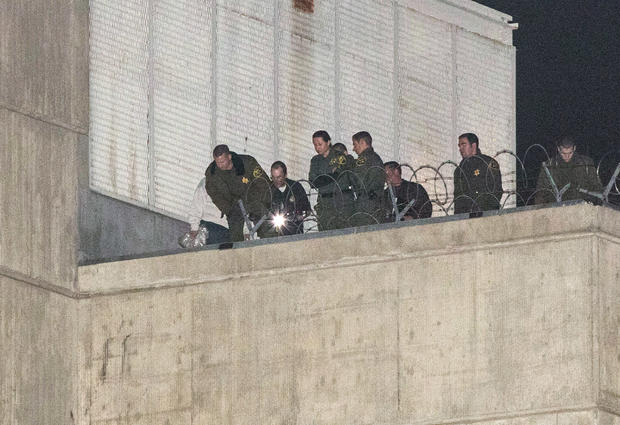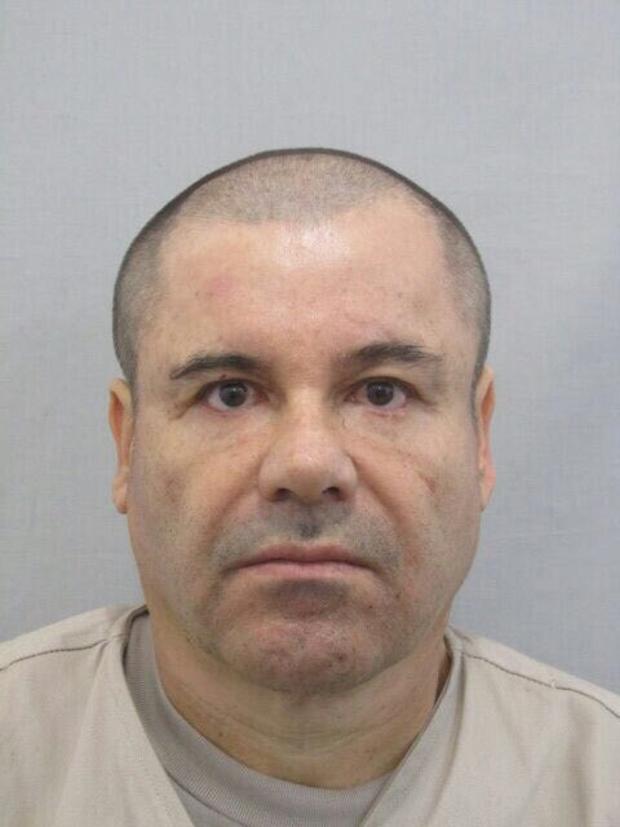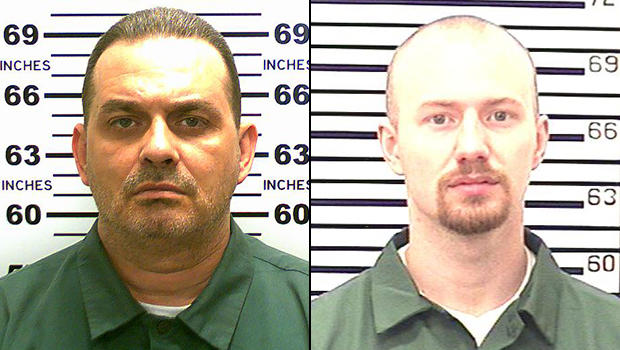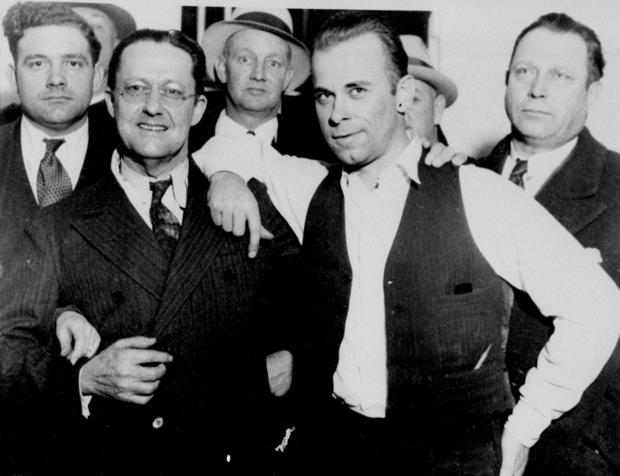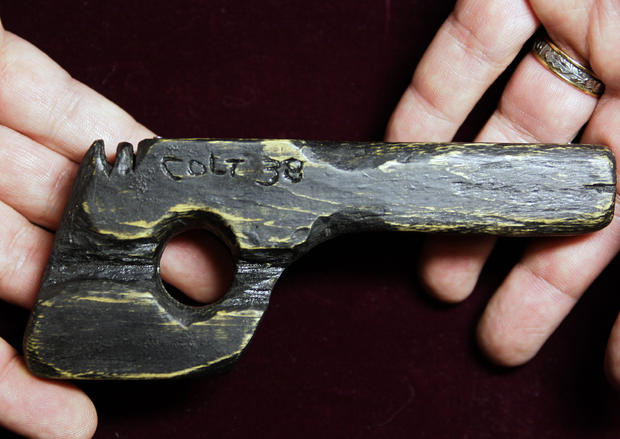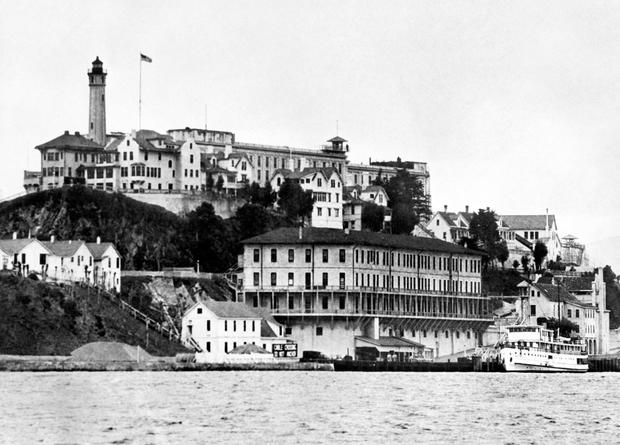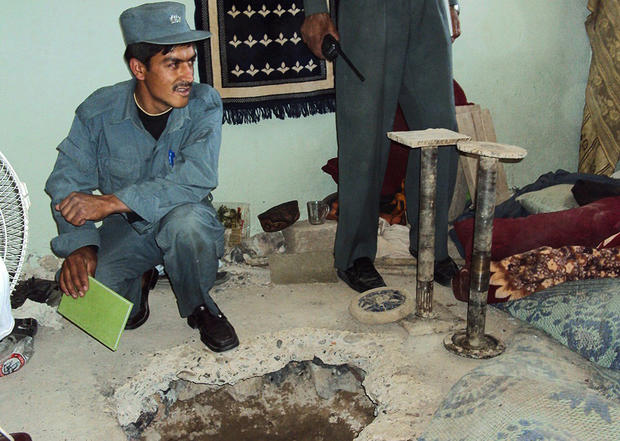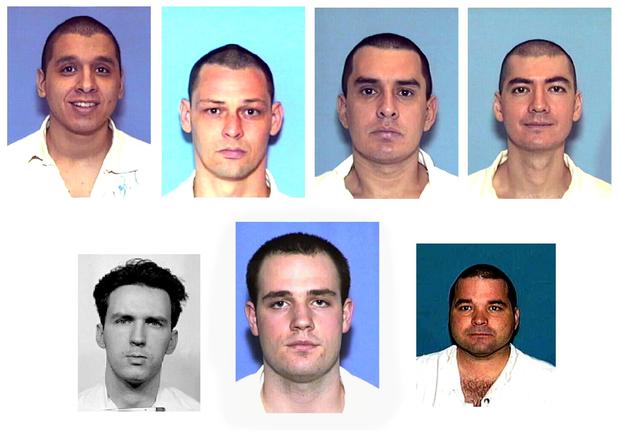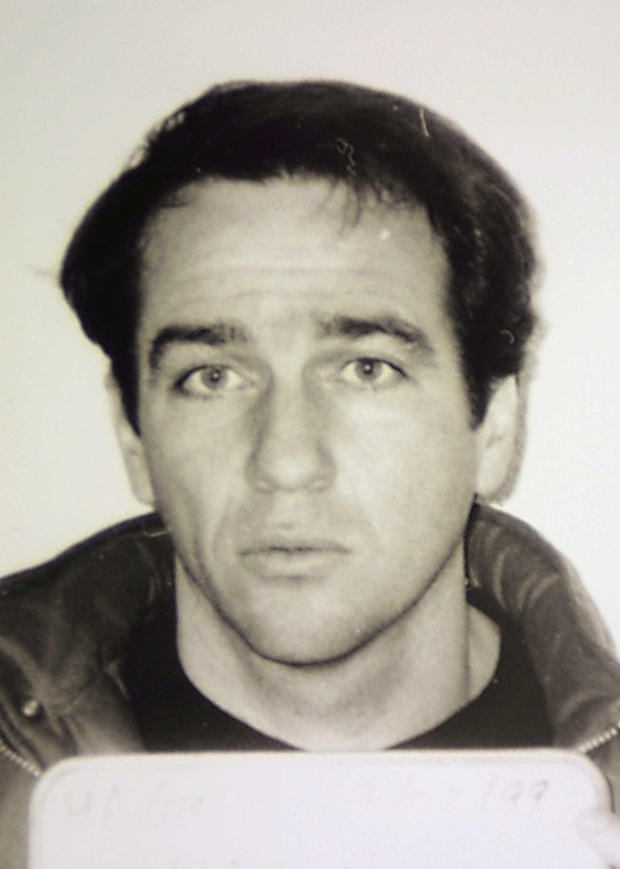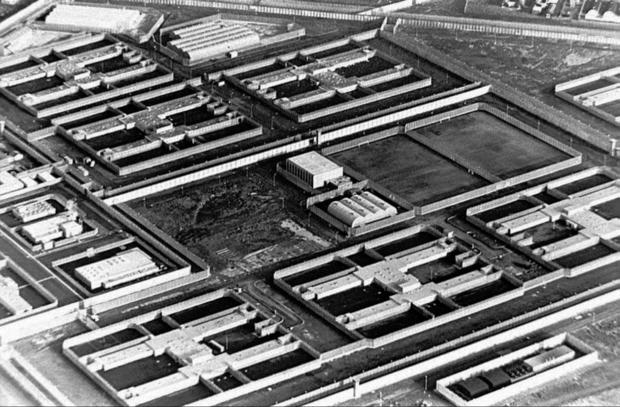Famous prison breaks
When criminals are convicted and sentenced to time behind bars; most of the time, that's the end of it. Every once in a while, though, inmates pull off elaborate escapes that shock the world.
On January 22, 2016, 43-year-old Tien Duong, 37-year-old Hossein Nayeri and 20-year-old Jonathan Tieu broke out of a Southern California jail by cutting their way through a steel grate and allegedly entering the prison's plumbing tunnels.
California prison break
Law enforcement says the group then rappelled off the prison's roof, down nearly five floors, using a make-shift rope made of linens.
All three men have since been apprehended.
"They let Hannibal Lecter out"
Jonathan Tieu, who has links to a Vietnamese gang, is facing murder charges. Tien Duong, who is also believed to have gang ties, is being held on attempted murder charges. Hossein Nayeri is accused of kidnapping and torture for a 2012 incident, in which he and an accomplice allegedly tortured a man with fire.
"They also poured bleach all over him and in the end, he cut his penis off," Lt. Dave Sawyer said.
In fact, in a dramatic warning about the danger Nayeri posed as a fugitive, an Orange County prosecutor said, "They let Hannibal Lecter out."
Joaquin "El Chapo" Guzman
Mexico's most powerful drug lord, Joaquin "El Chapo" Guzman, escaped from a maximum security prison in Mexico for the second time, July 11, 2015. A massive manhunt then commenced for the notorious leader of the Sinaloa cartel, which is worth about $3 billion and believed to control most of the major drug crossing points at the U.S. border with Mexico.
On January 8, 2015, the DEA confirmed that "El Chapo" had been captured again, after an armed battle with Mexican Marines. Here, he is presented to the press upon his last recapture in February 2014.
Joaquin "El Chapo" Guzman
According to Mexico's top security official, Guzman escaped through a 1-mile tunnel he entered from a small opening in the shower area of his cell. The elaborate underground escape route was ventilated, well-lit, and even equipped with a motorcycle on rails to carry digging equipment.
Guzman's use of tunnels, both as escape routes and to transport drugs, is legendary. In fact, just days before he was recaptured in 2014, he evaded authorities through a series of tunnels, hidden under the bathtub of his safe house.
Joaquin "El Chapo" Guzman
This photograph of Mexican drug lord Joaquin "El Chapo" Guzman was released to the public by the office of Mexico's Attorney General, after his escape from custody on July 11, 2015.
Guzman's Sinaloa Cartel is the largest in Mexico. It controls almost half of the illegal drugs flowing from Mexico to the United States, including everything from marijuana and cocaine to heroin and methamphetamines.
U.S. officials knew almost immediately after Guzman was captured in 2014, that plots were being hatched to free him, sources told CBS News. And as CBS News correspondent Omar Villafranca reports, Mexican authorities dismissed widespread U.S. concerns about corruption, rejected extradition requests, and promised Guzman was secure.
David Sweat and Richard Matt
Two convicted killers, David Sweat (L) and Richard Matt (R), broke out of a maximum-security prison near the Canadian border, in the dead of the night on June 6, 2015.
They reportedly used power tools to cut their way through the wall of their adjoining cells and break through an additional brick wall, before climbing out onto a six-story catwalk at the Clinton Correctional Facility in Dannemora, New York.
Convicted killers cut their way out
Matt and Sweat then cut a hole into the 24-inch wide steam pipe, seen here, and shimmied through a maze of tunnels, before cutting a lock and chain on a manhole cover three blocks from their New York prison wing.
When prison officials then went to routinely check their cells the following morning, all that was left was a taunting note, urging authorities to "Have a nice day."
A law enforcement source told CBS News that a female prison worker, named Joyce Mitchell, was allegedly supposed to pick up the two inmates after they broke out, but she had a panic attack and went to the hospital instead. As a result, a massive manhunt for Richard Matt, 48, and David Sweat, 34, continued for nearly three weeks. The U.S. Marshals Service even added both men to the "15 Most Wanted" fugitives list, before Matt was ultimately killed and Sweat captured.
John Dillinger
John Dillinger and his gang of violent cohorts were responsible for killing 10 men, robbing numerous banks, and staging three jail breaks, during the Gangster Era of the mid-twentieth century.
In September of 1933, after robbing a bank in Bluffton, Ohio, Dillinger was arrested and documents found in his possession appeared to contain the plans for a prison break. Four days later, eight of his friends escaped from the Indiana State Prison with shotguns and rifles that had been smuggled into their cells.
In October of that same year, three of those fugitives then showed up at the Lima jail where Dillinger was being held, shot the sheriff, and set him free.
Here, Dillinger strikes a jaunty pose with prosecutor Robert Estill in what would become an infamous image at the Crown Point, Indiana jailhouse, February 1934.
John Dillinger and the wooden gun
Years later, in what is widely considered his most stunning escape, Dillinger broke out of the county jail in Crown Point, Indiana, where he was awaiting trial for the murder of an East Chicago police officer. The escape was shocking because authorities had previously believed the jail was "escape proof," due to the potency of guards, policemen and national guard troops stationed there.
On March 3, 1934, however, Dillinger forced those guards to open the door to his cell by intimidating them with a wooden gun he had allegedly whittled. Dillinger then seized two of their machine guns and fled.
This September 24, 2009 picture shows the piece of wood he carved to look like a Colt 38. It was up for auction at the Heritage Auction Galleries in Dallas, Texas.
Escape from Alcatraz
While most infamous prison breaks are executed with actual tools and/or weapons that have been smuggled in, the legendary "Escape from Alcatraz" involved a set of innovative makeshift tools that the inmates fashioned themselves from unlikely materials.
In June 1962, three criminals -- Frank Morris, Clarence and John Anglin -- escaped from the Alcatraz Federal Penitentiary on Alcatraz Island, using a drill fashioned from the motor of a vacuum cleaner, cafeteria spoons that they used to chip away at the walls, and a makeshift raft made of raincoats from the prison sewing shop.
The prisoners also created dummy heads by combining soap, toilet paper and human hair, to fool prison officers making night-time inspections of their beds.
Catch Me If You Can
"Catch Me If You Can" -- the 2002 film about Frank Abagnale, who pocketed millions of dollars by posing as a PanAm pilot, a Georgia doctor, and a Louisiana parish prosecutor -- portrays many of his most notable cons, but leaves out the one that allowed him to escape from a Georgia prison in 1971.
In the 1970s, prisons across the country were being investigated by congressional committees for civil rights violations. So, when a U.S. Marshall misplaced Abagnale's detention papers upon his arrival at the Federal Detention Center in Atlanta, Abagnale was able to convince the guards there that he was actually an undercover prison inspector posing as an inmate. He then built up this fake alibi over the next several weeks, until guards trusted him enough to meet an accomplice in a car outside the prison gates.
Here, Frank Abagnale poses with Steven Spielberg and Leonardo DiCaprio at the premiere of "Catch Me If You Can," December 16, 2002.
T.J. Lane
In September of 2014, T.J. Lane -- a 19-year-old serving three lifetime prison sentences, without the possibility of parole, for killing three of his classmates and wounding three others in a 2012 high school shooting -- escaped from prison with two of his fellow inmates.
Lane, convicted killer Lindsey Bruce and convicted kidnapper Clifford Opperud escaped from Allen Correctional Institute in Lima, Ohio by building a homemade ladder with whatever materials they could scrap together, then using it to scale the prison walls. All three men were apprehended within hours.
Here, T.J. Lane smirks as he listens to the judge during his sentencing, March 19, 2013. Lane reportedly pled guilty, but said he didn't know why he went on the murderous rampage.
Taliban tunnel
In 2011, nearly 500 Taliban fighters and commanders escaped from an Afghan prison in the city of Kandahar, in an audacious jailbreak the government admitted was a security "disaster."
The Taliban later claimed responsibility for springing the inmates, through a 1,050-foot tunnel that bypassed a series of government checkpoints, watchtowers and razor wire barriers. It allegedly took five months to dig, and guards at Sarposa Prison only discovered its existence 30 minutes after the last of the Taliban insurgents had reached their safe houses on the other side... timing many find suspect.
Here, an Afghan policeman sits next to the entrance of the tunnel in the Political Prisoner's section of Sarposa Prison, through which the Taliban fighters escaped, on April 25, 2011.
Billy Hayes & the Midnight Express
Billy Hayes, a 23-year-old student from New York, was sentenced to four years in Turkish prison in 1970, for attempting to smuggle hashish out of the country.
Several weeks before the end of his prison time, however, his sentence was extended by an additional 30 years. So, Hayes -- who had been given a job on the docks -- escaped in a rowboat to Istanbul in 1975, unwilling to unjustly spend so much of his life behind bars.
Unable to find a safe hideout in Turkey, Hayes dyed his hair and made his way to Greece, before ultimately being deported to the United States. His story was later the subject of a popular book and the Academy Award-winning film, "The Midnight Express."
The Texas 7
In December of 2000, seven prisoners escaped from the maximum-security John B. Connally Unit near Kennedy, Texas, by overpowering prison guards and maintenance workers; stealing their clothes and the keys to one of their trucks; and fooling several other guards into giving them their weapons by posing as prison workers.
The Texas 7 then went on a crime spree from Texas to Colorado, but were ultimately captured as a result of the TV show "America's Most Wanted." Since then, three of the men -- including the group's ringleader, George Rivas -- have been executed.
This composite shows the seven fugitives involved: (top L-R) Joseph Garcia, Donald Newbury, George Rivas, Larry Harper, (bottom L-R) Patrick Murphy, Jr., Randy Halprin and Michael Rodriguez.
The French escape artist
Frenchman Pascal Payet has a knack for escaping from prisons in hijacked helicopters, and he's done it more than once.
In 2001, while serving time for a murder he committed during a 1997 robbery, Payet escaped from a prison in the French village of Luynes aboard a hijacked helicopter. In 2003, he organized a similar chopper escape for three of his friends incarcerated in that same prison.
By July 2007, Payet was back behind bars and being transferred to a different prison every six months (always in solitary confinement and under the highest level of surveillance). Despite these measures, however, four masked gunmen hijacked a helicopter from Cannes-Mandelieu Airport and sprung Payet from a prison in Grasse.
When Payet was finally captured again, his original sentence of 30 years was more than doubled, due to his involvement in the aforementioned prison breaks and the numerous crimes he committed while a fugitive in 2007.
The Maze
In 1983, 38 IRA prisoners escaped from "The Maze" in Northern Ireland by taking over its H-block 7 with guns smuggled into the prison.
They then sped away from the prison, formerly considered escape-proof, in a van that had entered the prison grounds to deliver food supplies. Nineteen of the escaped prisoners were apprehended within days of the break. Those that were not, were shuttled either to safe houses or other countries, like the United States.
This photo from September 1983 shows the Maze Prison's "H" Blocks, near Belfast in Northern Ireland, from which the 38 prisoners escaped.
Escape from the Tower of London
In 1597, John Gerard -- a Jesuit priest imprisoned and tortured for operating covertly in England, during Elizabeth I's Protestant reign -- escaped from the Tower of London by climbing down a rope that was strung across its moat for him by other members of the Catholic underground.
The Libby Prison Escape
In 1864, more than 100 Union soldiers escaped from Libby Prison, in the heart of Confederate Virginia, by digging a tunnel from the prison's vermin-infested basement to a tobacco shed outside of its walls.
Though many of those Union soldiers ultimately died before they could make it safely back to the North, it was the largest successful prison break of the Civil War.
Here, Libby Prison -- a three-story brick warehouse -- is seen in Richmond, Virginia, in April 1865. Displacing a tobacco company, the prison opened in 1861 during the American Civil War and was used for Union officers. In 1864, Union prisoners were moved elsewhere, so that this facility could be used to house Confederate military criminals instead.


